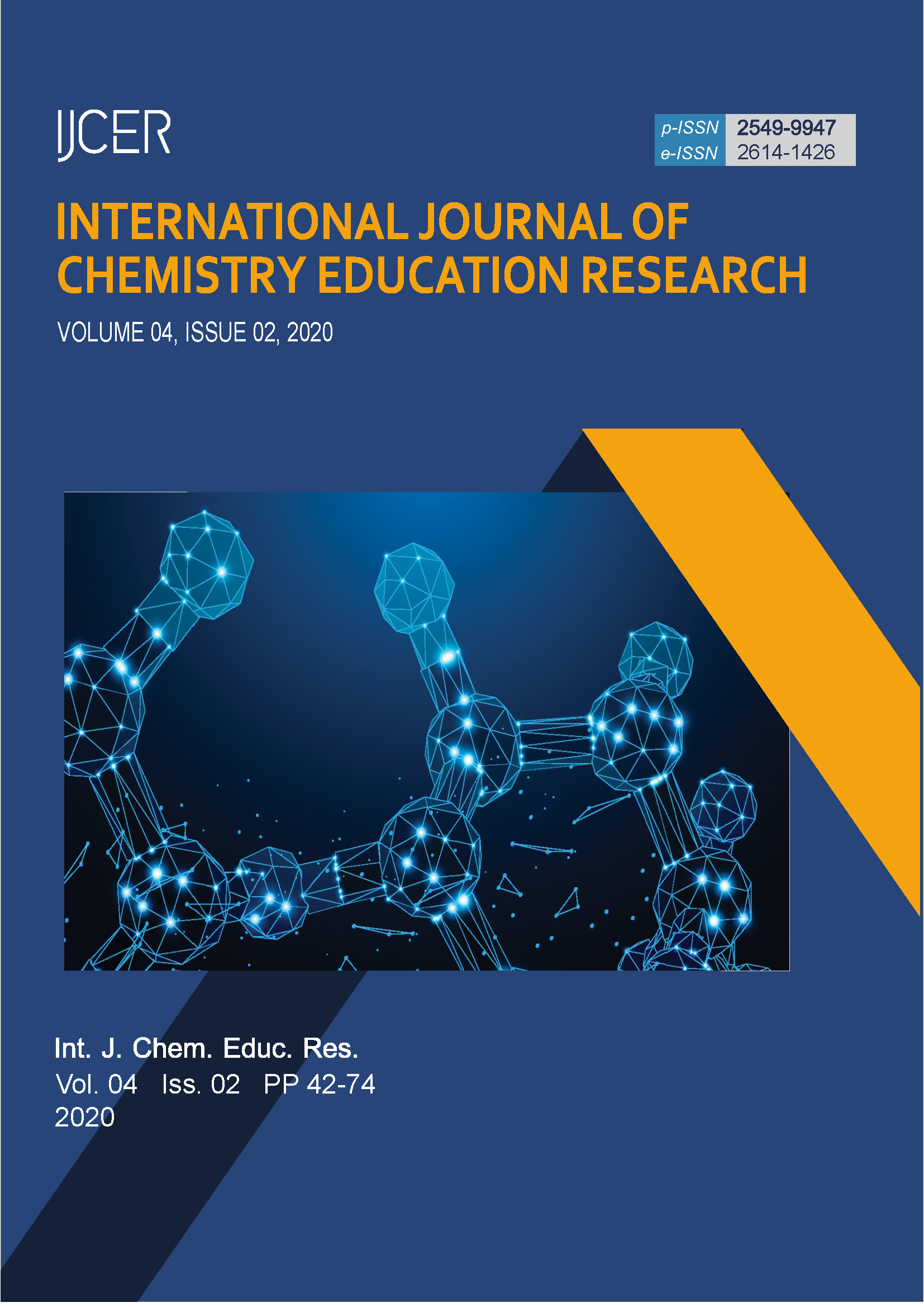Main Article Content
Abstract
The current covid-19 pandemic has an impact on Capita Selecta Chemistry lectures. The difficulty of face-to-face learning in class makes lecturers have to be able to find solutions to these problems. One of the solutions used is the application of the Project Based Learning (PjBL) model assisted by the WhatsApp Group (WAG) application and face-to-face through the zoom meeting application.This research is a research pre-experimental research with one-group pretest posttest design, experiments conducted in one class without a comparison class. The research was conducted at a State University in Bengkulu. With the research subjects as many as 24 students who took capita selecta Chemistry course. The instruments used in this study are learning outcomes tests and response questionnaires towards applications that used in learning. Data analysis techniques include average value, normality test, and hypothesis testing using the t-test using SPPS computer program for windows version 23. The results showed that there was an increase in student learning outcomes with the implementation of PjBL model assisted by WhatsApp and Zoom applications with pretest scores of 66.042, postest scores of 84.625 and the N-gain value data obtained was 0.547 in the moderate category. Student’s response toward the use of WAG and Zoom Meeting applications was very positive. As many as 91.67% of students considered that WAG application was a very practical application and it was easily accessible to students, especially access to learning materials. The use of zoom meeting according to 70% of students is also very interactive and can replace face-to-face meetings.
Keywords: PjBL Model, WhatsApp, Zoom Meeting, Learning Outcomes, Capita Selecta
Article Details
Author retain copyright and grant the journal right of first publication with the simultaneously licenced under A Creative Commons Attribution (CC-By-SA) 4.0 License that allows others to share the work with an acknowledgment of the worsk's authorship and initial publication in this journal.




